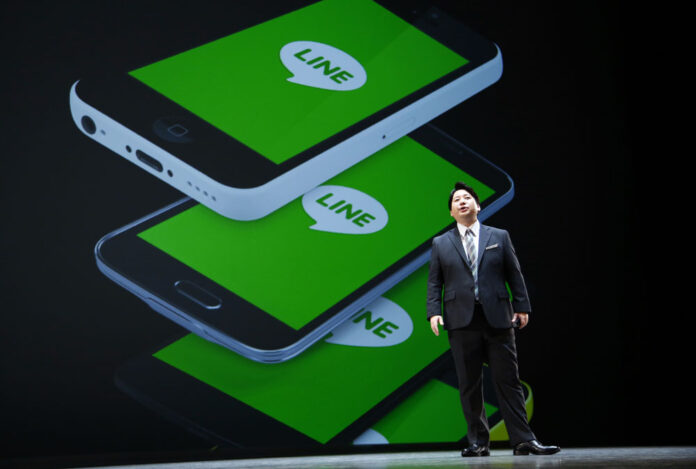
NEW YORK — Investors looking to ride the mobile messaging craze — get in line.
The Japanese messaging app Line is set to begin trading on the New York Stock Exchange on Thursday and in Tokyo on Friday. Though little known in the United States, Line has enjoyed a quick surge to popularity in Japan, filling an important communications hole after a devastating earthquake and tsunami in 2011 damaged phone infrastructure. In its home country, Line has more users than Facebook or Twitter.
Even if you haven’t heard of Line, there’s no need to look further than your own smartphone to gauge the importance of mobile messaging. Chances are, you’re among the 900 million users of Facebook Messenger, or the billion-plus users of WhatsApp. You might also have Snapchat, WeChat, Viber or Kakao Talk.
In an age when we’re glued to smartphones around the clock and increasingly shun traditional phone conversations, chat is king. Companies are angling to get in on the messaging craze with automated “chat bots” offering to book your plane tickets, shop for tennis shoes or send the day’s weather report. Emoji, the tiny virtual stickers attached to — or sent instead of — text messages, have become their own language.
Since its founding five years ago, Line has surged to 218 million active users, even though it’s available only in a handful of countries. Line’s members use the app not just for messaging but to send each other cute cartoon “stickers” (think intricate emoji) or search for jobs or music. It also offers free voice calls and has been focusing on expanding to markets such as Thailand, Taiwan and Indonesia.
It’s not yet clear how well Line might do in Western markets, where Facebook’s Messenger and WhatsApp are among the most popular messaging options. In addition, Apple and Google are also working on sprucing up their messaging offerings.
Based on this week’s offering, though, there’s strong investor demand for Line. On Monday, Line’s initial public offering raised more than USD$1.1 billion, making it the biggest IPO in the U.S. so far this year, according to IPO research firm Renaissance Capital. Shares priced at 3,300 yen each, or USD$32.84 per U.S.-traded share, the top of the predicted range. That suggests strong demand. The offering values Line at nearly USD$7 billion.
Line has its headquarters in Tokyo, but is owned by Naver Corp., South Korea’s No. 1 search engine. Line’s stock debut in Tokyo and New York is a milestone event for a Korean internet industry that has typically seen little success outside the country, apart from some online games.
In South Korea, though, Line lags far behind Kakao Talk, which had a year’s head start. With Kakao already popular, Naver turned its efforts instead to Japan, where no dominant messenger app was present at the time. It grew Line into an international service, while Kakao remained largely a Korean one.
Even in China, where Line is blocked along with Kakao, Line is well known for its cute animal characters, such as Brown bear. Those mascots started initially as “stamps” that users send to express their emotion or to replace text. They have turned into merchandised items sold at Line Friend Stores in some Asian countries including China. In Seoul, Chinese tourists flock to Line shops and queue up to snap up Brown dolls and Sally cups.
Naver still owns a majority stake in Line after the IPO. Co-founder Lee Hae Jin, 48, is one of the wealthiest individuals in South Korea. Speaking to reporters after a forum in 2014, Lee said he was “seriously truly worried” whether Naver could win the competition with American or Chinese companies.
This week’s IPO shows it at least has a fighting chance.
Story: Barbara Ortutay, Youkyung Lee
















































